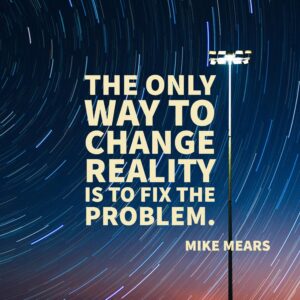Fix Problems, Not Blame
When something is going wrong with a project or a product, it is tempting to find out who is at fault and blame them. There is even a holiday (the first Friday the 13th of the year) called Blame-Someone-Else Day. As you grew older and more mature, you learned that blaming someone did not change the outcome or improve future performance, and the person who was singled out for blame was not always friendly or helpful afterward. Now, as a leader and a manager, it may still be tempting on occasion to affix blame when there is a problem, but just as in childhood, fixing blame does not improve the situation. If anything, spending time looking for someone to blame will delay solving the problem or fixing the situation.
Blaming is passive, detrimental, and discouraging. It is immature. Attaching blame to someone or something external is the opposite of taking responsibility. The only way to change reality is to fix the problem. After you have done what you can and are back on track for success, then perhaps there may be some merit to understanding what happened. But even here, you are not seeking to blame someone. Rather, you want to know if there is a systemic reason for a bad outcome—a reason that can be addressed so there are no identical, future problems.” There is a long-term benefit to fixing problems instead of blaming—you model for your employees the importance of reaching your goals, even in adversity, you show them that when mistakes happen, they must be addressed, and you do not encourage them to find someone to blame themselves.
During lean six sigma training I often share this video clip below from the movie Apollo 13. The clip takes place after the shuttle unexpectedly malfunctions. A group of NASA scientists, led by Ed Harris, are brainstorming solutions. As tensions rise the meeting could quickly transgress into a shouting match. Ed Harris doesn’t let that happen. He keeps the team focused on solving the problem
